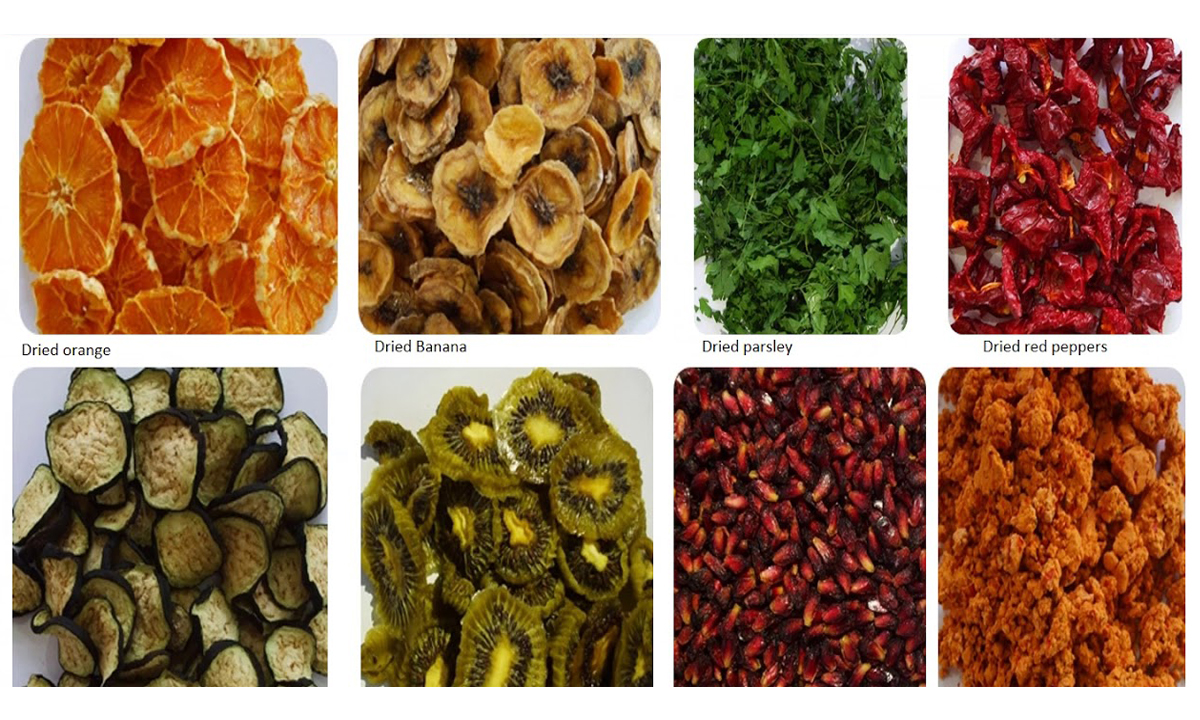India ranks first in the world in production of fruits and second in vegetables, accounting roughly 10 and 15 per cent, respectively, of total global production.
India have a strong and dynamic food processing sector playing a vital role in diversifying the agricultural sector, improving value addition opportunities and creating surplus food for agro-food products. Presently, 2.2 per cent of fruits and vegetables are processed, even as the country ranks second in the world in terms of production. This is comparatively low when compared to other countries like Brazil (30 per cent), USA (70 per cent) and Malaysia (82 per cent). The National policy aims to increase the percentage of food being processed in the country to 10 per cent by 2010 and 25 per cent by 2025. Food processing adds value, enhances shelf life of the perishable agro-food products and encourages crop diversification.
Drying or dehydration is the removal of the majority of water contained in the fruit or vegetable and is the primary stage in the production of dehydrated fruits and vegetables. Dehydrated vegetables and fruits provide convenient and delicious additions to family meals. They can be used alone, in combination with other foods or as an accent to add flavour. Dehydrated vegetables are best used as ingredients for soups, casseroles, sauces and stews.
Dehydration preserves the nutrients in the vegetables and removes the water content, resulting in a concentrated source of vitamins, minerals, fibre, and antioxidants. Additionally, dehydrated greens have a longer shelf life than fresh greens and can reduce food waste.
Need for dehydration of food
Dehydration is meant to preserve the food for longer time and in addition to reduce bulk and weight. This reduction in weight and bulk can result in economics in transport and cost of containers. It retains the size and shape of the original food. Dehydration produces convenience items like fruit juice concentrates, fruit juice powders, soup mixes etc. The consumer can simply dehydrate the material and uses for different purpose. Many fruits and vegetables are available only during specific season, hence with the help of dehydration process it can be preserved and made available for all seasons. The biological forces acting upon foods are minimized, and spoilage of foods are easily controlled in dehydration process.
Advantages of dried fruits and vegetables
There are 3 basic types of drying process
i) Sun and Solar drying
ii) Atmospheric dehydration including stationary or batch process and continuous process
a. Batch processes - kiln, tower, and cabinet driers
b. Continuous processes - tunnel, continuous belt, belt-trough, fluidized-bed, explosion puffing, foam-mat, spray, drum, and microwave-heated driers
iii) Sub atmospheric dehydration (vacuum shelf, vacuum belt, vacuum drum and freeze driers)



